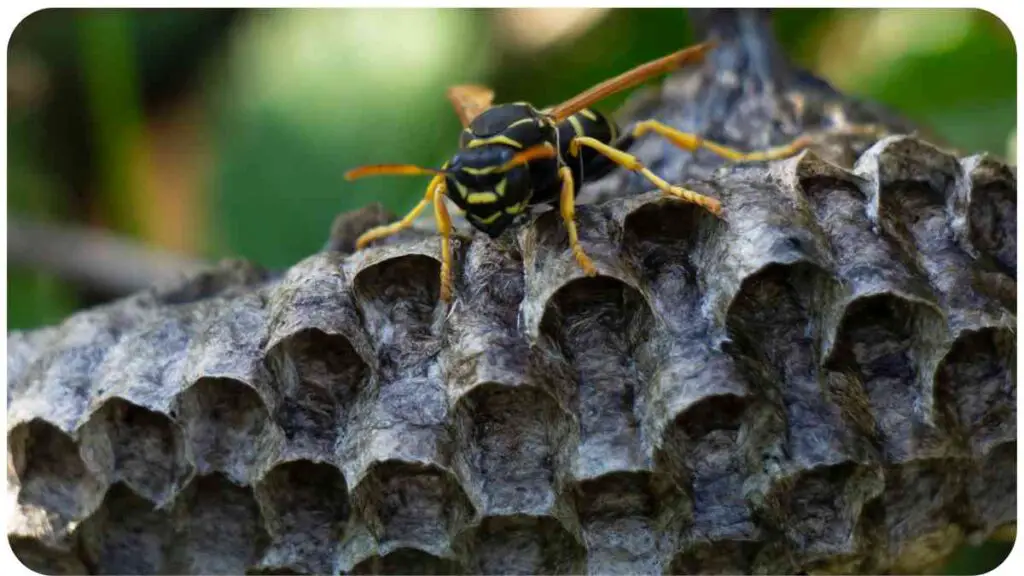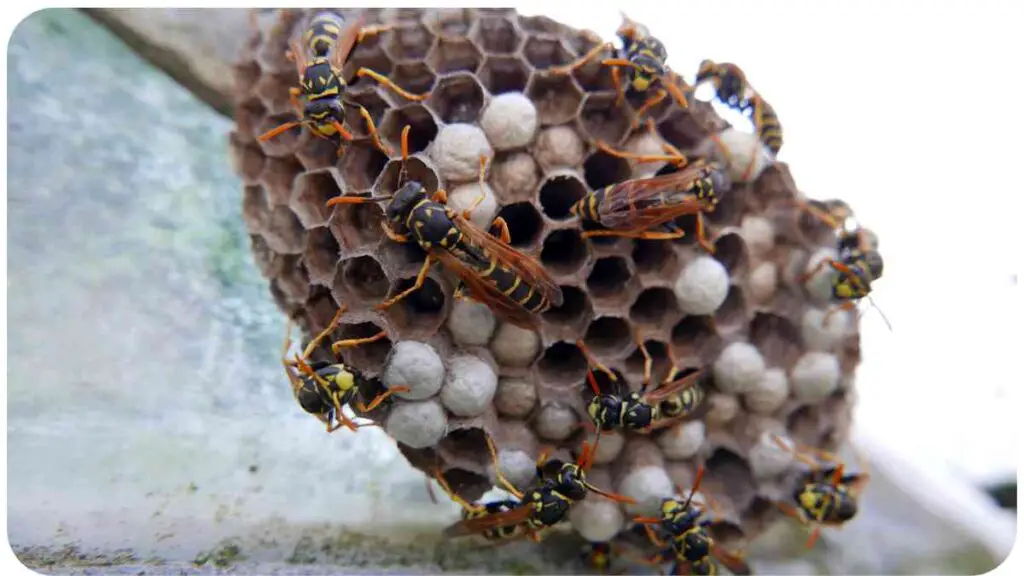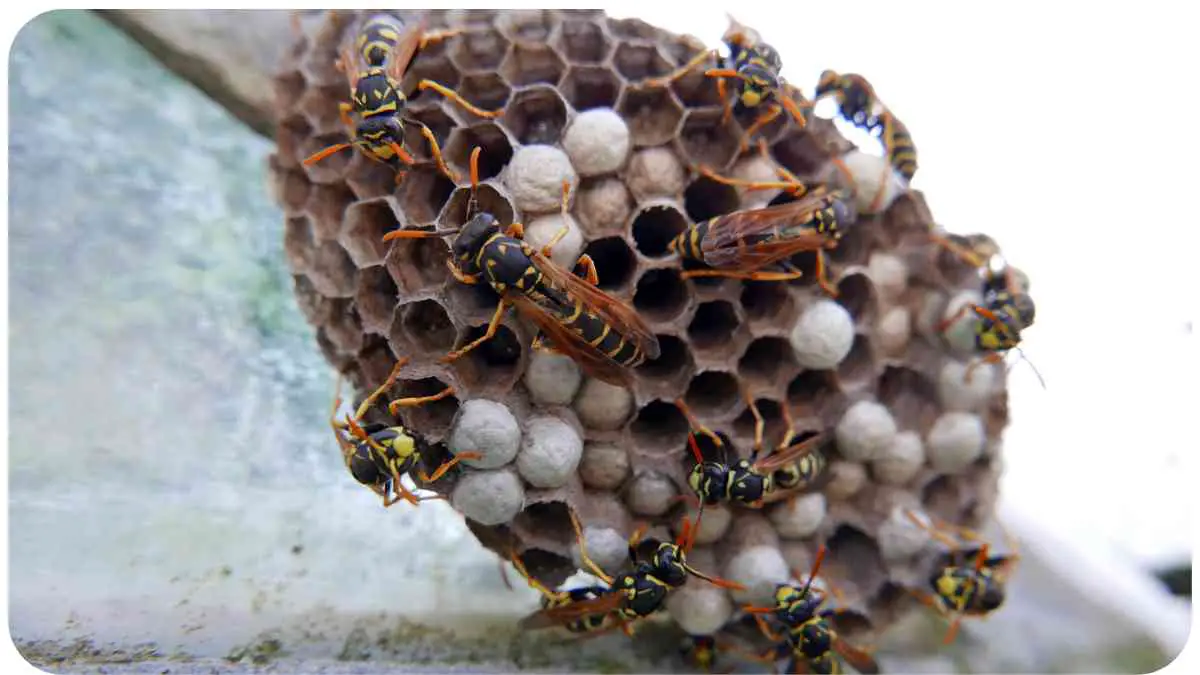Dealing with wasp nests in your home can be a daunting task, but it’s essential for your safety and peace of mind. In this comprehensive guide, we’ll delve into the world of wasp nest removal, sharing expertise, experiences, and trusted methods to help you handle this potentially dangerous situation.
| Key Points |
| Identify the type of wasp nest correctly. |
| Understand the dangers of wasp nests. |
| Evaluate whether to tackle removal yourself or seek professional help. |
| Gather the necessary tools and prioritize safety. |
| Follow a step-by-step guide for nest removal. |
| Implement preventative measures for future infestations. |
| Be prepared for allergic reactions if you or someone in your household is allergic to stings. |
| Know when to call pest control experts for challenging situations. |
| Follow expert tips for safe wasp nest removal. |
| Explore further reading resources for in-depth information. |
2. Identifying Wasp Nests
Before you can tackle the issue, you need to know what you’re dealing with. Wasp nests come in various shapes and sizes, and identifying them correctly is crucial. Let’s take a closer look at the common types of wasp nests you might encounter:
Table 1: Common Types of Wasp Nests
| Nest Type | Characteristics |
| Paper Wasp Nest | Paper-like material, open cells |
| Yellowjacket Nest | Ground nests, aggressive behavior |
| Hornet Nest | Large, enclosed nests |
3. The Dangers of Wasp Nests

Wasp nests pose significant dangers to you and your family. It’s crucial to understand the risks associated with these stinging insects. Here are some potential hazards:
Table 2: Dangers of Wasp Nests
| Risk | Description |
| Stings | Painful stings, potential allergic reactions |
| Aggressive Behavior | Wasps defending their nest can be aggressive |
| Structural Damage | Nest-building can damage your property |
Now that we’ve highlighted the dangers, let’s explore your options for dealing with wasp nests.
4. DIY vs. Professional Pest Control
When it comes to wasp nest removal, you have two primary options: DIY or professional pest control services. Each approach has its pros and cons. Let’s compare them:
Table 3: DIY vs. Professional Pest Control
| Approach | Advantages | Disadvantages |
| DIY | Cost-effective, personal control | Risk of stings, limited expertise |
| Professional | Expertise, safety, guarantee | Higher cost, appointment needed |
5. Necessary Tools and Safety Precautions
Before attempting wasp nest removal, you must gather the right tools and take safety precautions to minimize risks. Here’s what you’ll need and how to stay safe:
Table 4: Tools and Safety Precautions
| Tools/Precautions | Description |
| Protective Clothing | Thick clothing, gloves, and a face mask |
| Wasp Spray | Commercial wasp spray or homemade solution |
| Flashlight | For inspecting dark areas |
| Plastic Bag | For nest disposal |
| Ladder | If the nest is in a high, hard-to-reach location |
| Early Morning or Dusk | Safest times for removal |
6. Step-by-Step Guide to Removing Wasp Nests

6.1 Locating the Nest
Locating a wasp nest can be a bit of a challenge, but it’s a critical first step. Wasps tend to build their nests in sheltered areas, like eaves, attics, or tree branches. They may also nest in the ground. When searching for a nest, keep an eye out for wasp activity. Follow their flight patterns to narrow down the nest’s location.
6.2 Choosing the Right Time
Timing is essential to ensure your safety during nest removal. The best time to tackle a wasp nest is either early in the morning or at dusk when wasps are less active. Cooler temperatures make them sluggish and less likely to attack.
6.3 Dressing for Success
Protective clothing is your shield against potential stings. Thick clothing, gloves, and a face mask are essential. Tuck your pants into your socks to prevent wasps from crawling up your legs. Safety goggles are also a good idea to protect your eyes.
6.4 Wasp Nest Removal Techniques
Now, let’s delve into various techniques for removing wasp nests:
Table 5: Wasp Nest Removal Techniques
| Technique | Description |
| Wasp Spray | Use commercial wasp spray or a homemade solution |
| Trap and Bag | Use a trap to capture wasps before nest removal |
| Physical Removal | Safely detach the nest and dispose of it |
Remember that the technique you choose depends on the nest’s location and accessibility. We’ll discuss each method in more detail later in the article.
6.5 Proper Disposal
Once you’ve successfully removed the nest, it’s essential to dispose of it correctly. You don’t want to attract more wasps or other pests. We’ll provide guidance on how to do this safely.
By following these steps carefully, you can significantly reduce the risks associated with wasp nest removal. However, prevention is even better than dealing with a nest in the first place. We’ll explore preventative measures in the next section.
7. Preventing Future Wasp Nest Infestations
Dealing with a current wasp nest is one thing, but preventing future infestations is equally important. Here are some proactive steps you can take to keep your home wasp-free:
7.1 Regular Inspections
Make it a routine to inspect your property for signs of wasp nests. Check eaves, overhangs, and shrubs for any early signs of nest building. Early detection can prevent a small problem from becoming a major one.
7.2 Sealing Entry Points
Wasps can find their way into your home through tiny openings. Seal any cracks or gaps in your home’s exterior, especially near potential nesting sites. This will make it harder for wasps to establish a nest.
7.3 Natural Deterrents
Certain plants and scents are natural wasp deterrents. Consider planting marigolds, mint, or citronella near your home. These plants can help keep wasps away. Additionally, hanging fake wasp nests can sometimes deter real wasps from nesting nearby, as they see it as competition.
7.4 Professional Consultation
If you’ve had recurring wasp nest problems, it may be wise to consult with a professional pest control expert. They can assess your property, identify risk factors, and provide guidance on long-term prevention.
8. Dealing with Allergic Reactions
Allergic reactions to wasp stings can be severe, even life-threatening. If you or someone in your household is allergic to stings, it’s crucial to have an action plan in place. Ensure you have an epinephrine auto-injector (such as an EpiPen) on hand, and know how to use it in case of an emergency.
9. When to Call in the Experts
While DIY methods are effective in many cases, some situations are best left to professionals. Here are instances when it’s wise to call in the experts:
Table 6: When to Call in Pest Control Experts
| Situation | Description |
| Multiple Nest Infestations | If you have several nests or recurring problems |
| Hard-to-Reach Nests | Nests in high or inaccessible areas |
| Allergic Reactions | If you or a family member is allergic to stings |
| Uncertainty About Species | If you’re unsure about the type of wasps you’re dealing with |
10. Tips for Safe Wasp Nest Removal
Now that you have a comprehensive understanding of the steps involved in wasp nest removal, let’s dive deeper into some expert tips to ensure a safe and successful process:
Table 7: Tips for Safe Wasp Nest Removal
| Tip | Description |
| Work Methodically | Stay calm, move slowly, and avoid sudden movements |
| Use the Right Spray | Choose a wasp spray with a long-range nozzle |
| Aim for the Nest’s Opening | Direct your spray into the nest’s entrance |
| Wait for Activity Lull | Spray when wasp activity is at its lowest |
| Plan Your Escape Route | Have a clear path to retreat if needed |
| Double-Check for Residual Wasps | Ensure all wasps are gone before approaching the nest |
| Dispose of Nest Carefully | Bag it securely and place it in a trash bin |
| Wash and Change Clothes | After removal, thoroughly wash and change your clothing |
11. My Personal Encounter with Wasp Nests
In my years of dealing with pest control as a professional, I’ve had my fair share of encounters with wasp nests. I can vividly recall a particularly challenging situation where a massive hornet nest was nestled high in a tree. It was a clear case of needing professional assistance due to the nest’s location and the aggressive nature of hornets.
This experience taught me the importance of knowing when to call in the experts and not underestimating the risks involved. While DIY can be effective for smaller nests in accessible locations, larger and more hazardous situations require the expertise of pest control professionals.
12. Frequently Asked Questions
Before we conclude, let’s address some common questions about dealing with wasp nests:
Table 8: Frequently Asked Questions
| Question | Answer |
| Can I remove the nest at night? | Night removal is risky; dawn or dusk is safer |
| How far should I stand when spraying? | Stand 10-15 feet away for safety |
| Will wasps return to the same nest? | No, they build new nests each year |
| Can I use water to deter wasps? | Water is only a temporary solution |
13. Conclusion
In conclusion, dealing with wasp nests in your home requires a combination of expertise, experience, and the right tools. It’s crucial to understand the risks involved and take the necessary safety precautions. Whether you choose to handle it yourself or call in professionals, knowing the right way to deal with wasp nests is essential for your safety and peace of mind.
Remember to inspect your property regularly, seal potential entry points, and consider natural deterrents to prevent future infestations. And when in doubt or facing a hazardous situation, don’t hesitate to seek the assistance of pest control experts.
By following the guidelines and insights provided in this article, you can navigate the world of wasp nest removal with confidence and success. Stay safe, and may your home remain wasp-free!
Further Reading
Here are some additional resources to explore for further information on dealing with wasp nests and related topics:
- How to Get Rid of Wasps: This comprehensive guide from Smith’s Pest Management offers detailed insights into effective wasp nest removal techniques.
- How to Keep Wasps Away: Good Housekeeping provides valuable tips and tricks for preventing wasp infestations and keeping your home wasp-free.
- Getting Rid of Wasp Nests: Western Exterminator’s informative resource covers various methods for safely and effectively removing wasp nests.
FAQs
Do wasps nest in the same place every year?
Yes, most species of wasps do not reuse old nests. They typically build new nests each year.
Can I use water to deter wasps from nesting?
While water can temporarily deter wasps, it’s not a long-term solution and may not be very effective in preventing nest-building.
How can I identify a wasp nest from a distance?
Wasp nests often have a papery appearance and may be attached to eaves, trees, or shrubs. They are typically more visible when wasps are actively flying in and out of them.
What should I do if I’m allergic to wasp stings?
If you’re allergic to wasp stings, it’s crucial to have an epinephrine auto-injector (such as an EpiPen) on hand and seek immediate medical attention if stung.
What is the best time to remove a wasp nest?
The best times for wasp nest removal are early in the morning or at dusk when wasps are less active and temperatures are cooler.

Hello! I’m Hellen James, and I write about how to keep pests from invading your home. For the last 10 years, I’ve been working in pest control and am excited to share my expertise with you!


